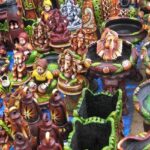The majestic Korean temples’ architecture stands as a testament to centuries of Buddhist tradition and cultural excellence. These sacred spaces, seamlessly blending natural landscapes with intricate architectural details, offer visitors a profound glimpse into South Korea’s spiritual heart. From metropolitan Seoul to coastal cliffs and mountaintop retreats, each Korean temple tells its own unique story through ancient artefacts, stunning sculptures, and serene meditation spaces. Adorned with vibrant dancing patterns, intricate wooden carvings, and towering pagodas, these temples serve as sanctuaries of peace, wisdom, and deep spiritual reflection.
Top 10 Korean Temples
Here are 10 of the most beautiful and stunning Korean temples for a spiritual and cultural experience.
1. Jogyesa Temple
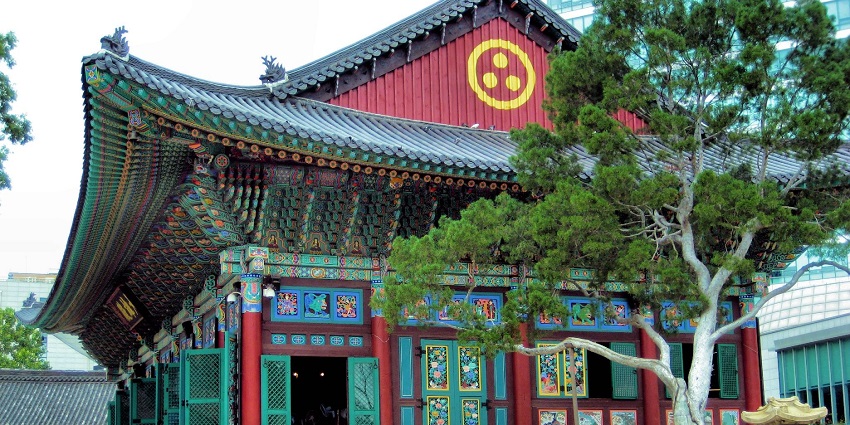
Photo: Francisco Anzola / Wikimedia Commons
Located in Seoul’s bustling heart, Jogyesa Temple represents the essence of Korean Buddhism’s Jogye Order. This urban sanctuary, established in 1910, serves as a peaceful refuge amid the city’s dynamic energy. The temple’s magnificent main hall houses an imposing seated Buddha statue, while its courtyard features ancient trees that have witnessed centuries of prayers and ceremonies. The temple particularly comes alive during the annual Lotus Lantern Festival, when thousands of colourful lanterns illuminate its grounds.
Location: 55 Ujeongguk-ro, Jongno-gu, Seoul
Major Attraction: Daeungjeon (Main Buddha Hall)
Ideal Trip Duration: 2 – 3 hours
Timings: 4 AM – 9 PM
Nearest Airport: Gimpo International Airport
Nearest Subway Station: Jonggak Station
2. Bongeunsa Temple
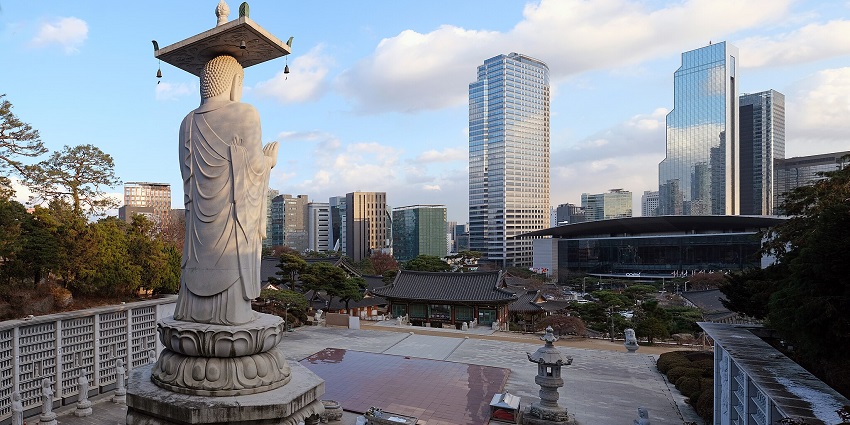
Photo: kallerna / Wikimedia Commons
Bongeunsa Temple offers a striking contrast to the modern Gangnam district surrounding it. Founded in 794, this spiritual oasis has evolved alongside Seoul while maintaining its sacred character. The temple complex showcases traditional Korean Buddhist architecture and houses an impressive collection of Buddhist scriptures. Its towering 23-meter Maitreya Buddha statue stands as a powerful symbol of spiritual awakening against the backdrop of modern skyscrapers.
Location: 531 Bongeunsa-ro, Gangnam-gu, Seoul
Major Attraction: 23 – meter Maitreya Buddha statue
Ideal Trip Duration: 2 – 3 hours
Timings: 5 AM – 9 PM
Nearest Airport: Gimpo International Airport
Nearest Subway Station: Samseong Station
3. Haedong Yonggungsa Temple
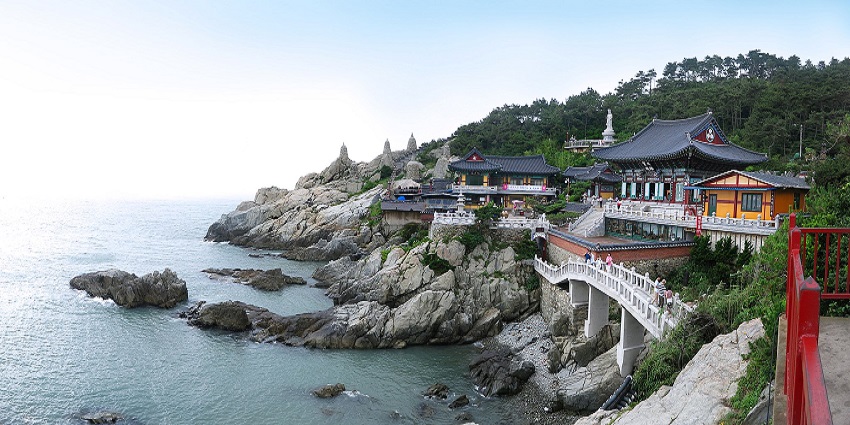
Photo: midnight.here / Wikimedia Commons
This breathtaking seaside temple defies the traditional mountain temple setting. Built-in the 14th century, Haedong Yonggungsa Temple perches dramatically on coastal cliffs, offering visitors a unique blend of spiritual atmosphere and oceanic majesty. The temple complex includes a remarkable Buddhist sanctum hidden within a natural cave and features a distinctive three-tiered pagoda guarded by four lion statues, each representing different aspects of human emotion.
Location: 86 Yonggung-gil, Gijang-eup, Gijang-gun, Busan
Major Attraction: Seaside Buddha statue
Ideal Trip Duration: 3 – 4 hours
Timings: 5 AM – 7 PM
Nearest Airport: Gimhae International Airport
Nearest Subway Station: Haeundae Station
4. Tongdosa Temple
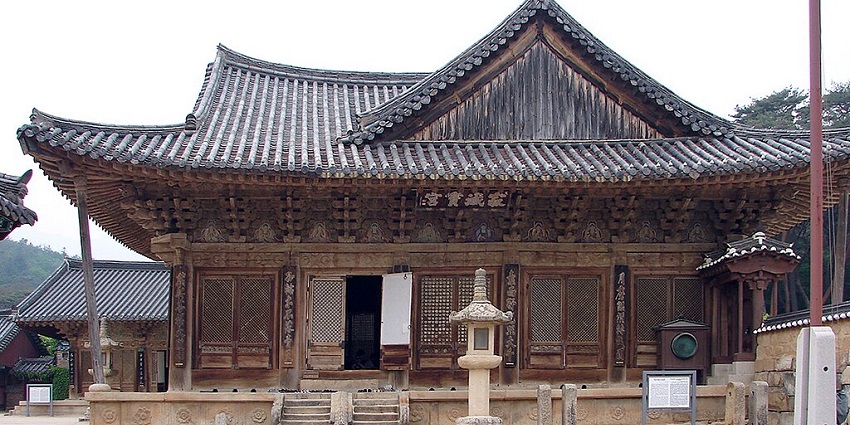
Photo: Steve46814 / Wikimedia Commons / Image For Representation Only
Known as the ‘Temple without a Buddha,’ Tongdosa Temple takes pride in housing actual relics of the Buddha rather than statues. Established in 646 CE, it stands as South Korea’s largest temple complex, encompassing 65 distinct structures. The temple’s unique approach to Buddhist worship and its vast collection of cultural treasures make it a vital centre for Korean Buddhism studies and practice.
Location: 108 Tongdosa-ro, Habuk-myeon, Yangsan-si, Gyeongsangnam-do
Major Attraction: Diamond Precept Platform
Ideal Trip Duration: 1 day
Timings: 5 AM – 6 PM
Nearest Airport: Gimhae International Airport
Nearest Subway Station: Tongdosa Station
5. Bulguksa Temple
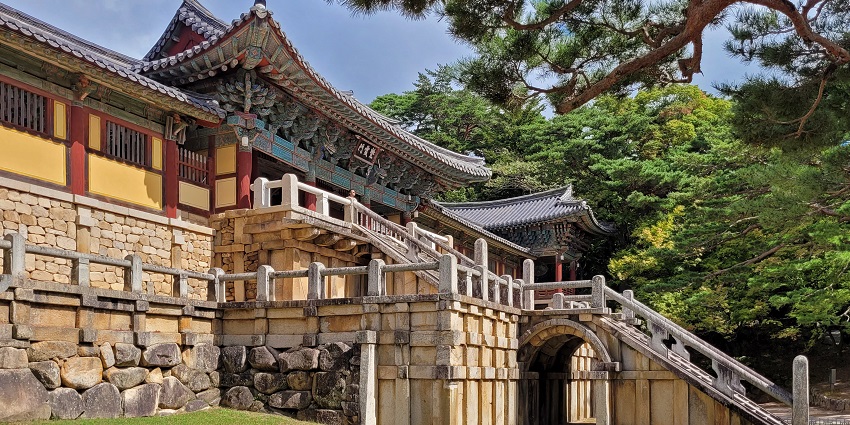
Photo: Bernard Gagnon / Wikimedia Commons
Perched on Mount Toham’s scenic slopes, Bulguksa Temple represents the pinnacle of Silla Dynasty Buddhist architecture and spiritual devotion. Completed in 774, this UNESCO World Heritage site showcases some of Korea’s most precious Buddhist art, including two remarkable stone pagodas: Dabotap and Seokgatap. The temple’s layout symbolically represents the Buddhist concept of paradise on Earth, with intricately designed bridges, elegant stairways, and serene courtyards. Its craftsmanship reflects the advanced stone masonry and artistic excellence of the Silla period, making it a timeless masterpiece that continues to inspire visitors and scholars alike.
Location: 385 Bulguk-ro, Gyeongju-si, Gyeongsangbuk-do
Major Attraction: Dabotap and Seokgatap pagodas
Ideal Trip Duration: 4 – 5 hours
Timings: 7 AM – 6 PM
Nearest Airport: Pohang Airport
Nearest Subway Station: Bulguksa Station
6. Boriam Temple
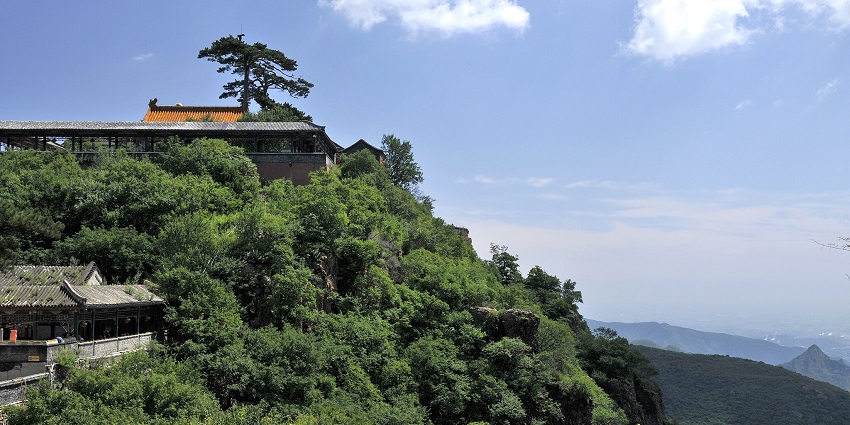
Photo: mayanming / Wikimedia Commons
Boriam Temple overlooks spectacular coastal views from its mountaintop location. This centuries-old temple showcases exquisite wooden altar carvings, intricate pagoda details, and weathered stone statues that tell tales of devotion through the ages. The temple’s remote location, lush forests, and misty cliffs create an atmosphere of profound serenity and contemplation, making it a perfect retreat for meditation and spiritual reflection. Seasonal cherry blossoms and vibrant autumn foliage further enhance its mystical charm, while ancient inscriptions carved into rock faces whisper the wisdom of generations past.
Location: San 1 Namsan-ri, Gwangdo-myeon, Namhae-gun, Gyeongsangnam-do
Major Attraction: Mountain-top Observatory
Ideal Trip Duration: 3 – 4 hours
Timings: 6 AM – 7 PM
Nearest Airport: Sacheon Airport
Nearest Subway Station: Jinju Station
7. Ssanggyesa Temple
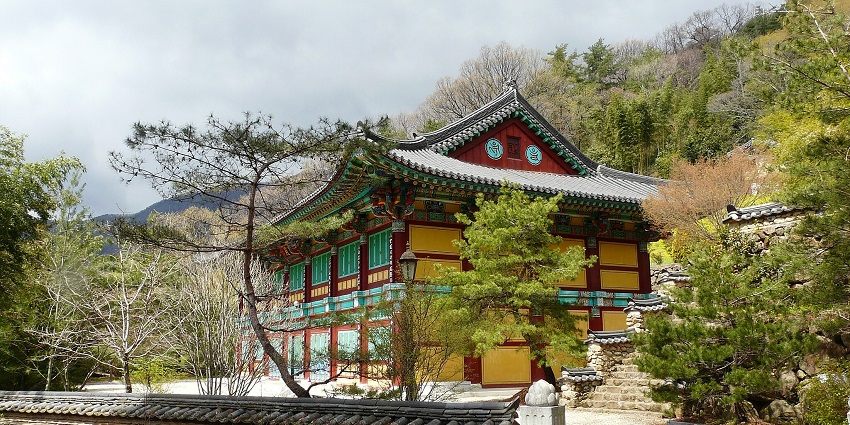
Photo: Piotrus / Wikimedia Commons
Ssanggyesa Temple offers visitors a unique combination of spiritual and natural beauty. The temple’s tea fields and cherry blossom trees create an ever-changing seasonal display, while its ancient structures house precious Buddhist artefacts and artworks. The temple’s remote location adds to its mystical atmosphere, making it an ideal retreat for meditation and reflection. Flowing nearby, the crystal-clear waters of Jirisan’s valleys enhance the serene ambience, while the temple’s centuries-old rituals and ceremonies provide a deep connection to Korea’s rich Buddhist heritage and cultural traditions.
Location: 59 Hwagae-ro 1674beon-gil, Hadong-gun, Gyeongsangnam-do
Major Attraction: Ancient tea fields
Ideal Trip Duration: 1 day
Timings: 5 AM – 7 PM
Nearest Airport: Gwangju Airport
Nearest Subway Station: Hadong Station
8. Baegyangsa Temple
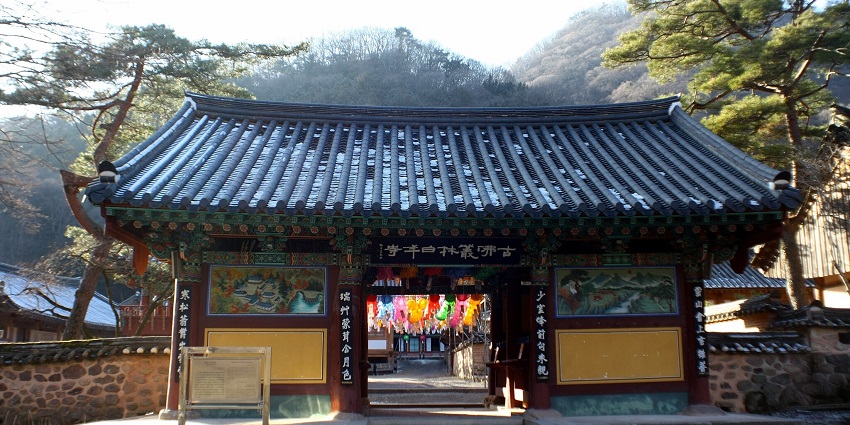
Photo: Dalgial / Wikimedia Commons
Dating back to 632 AD, Baegyangsa Temple sits within the scenic Naejangsan National Park. Known as the ‘White Sheep Temple,’ it houses significant cultural treasures, including the impressive Daeungjeon Hall and the ornate Sacheonwangmun Gate. The temple’s natural setting comes alive with brilliant colours during autumn, making it a particularly popular destination for fall visitors. Additionally, Baegyangsa serves as an important centre for Korean Buddhist practice, offering temple stay programs where guests can experience meditation, tea ceremonies, and monastic life while surrounded by breathtaking mountain scenery.
Location: 224 Baegyangsa-ro, Jangseong-gun, Jeollanam-do
Major Attraction: Daeungjeon Hall
Ideal Trip Duration: 1 day
Timings: 5 AM – 7 PM
Nearest Airport: Gwangju Airport
Nearest Subway Station: Jangseong Station
9. Bongwonsa Temple
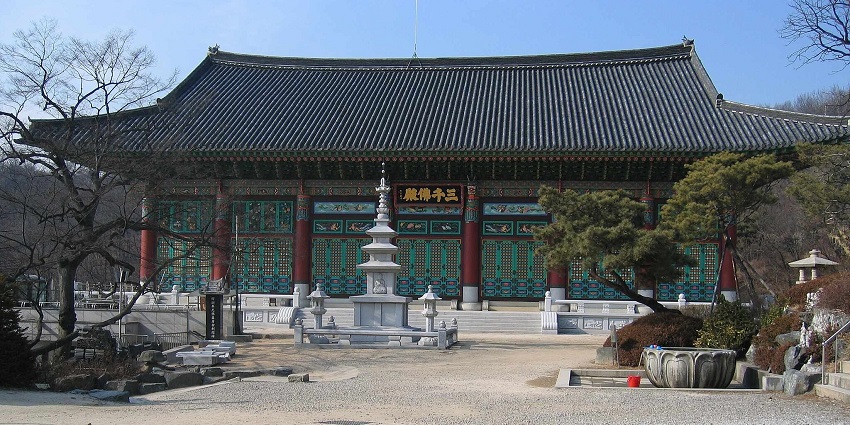
Photo: Billlion / Wikimedia Commons
Situated on Ansan Mountain’s edge in Seoul, Bongwonsa Temple has been a spiritual anchor since 889 AD. The temple’s famous lotus pond creates a serene atmosphere, especially during summer when lotus flowers bloom in abundance, attracting visitors seeking tranquillity. Despite its urban location, the temple maintains a peaceful ambience that transports visitors away from city life. Its historic halls, adorned with intricate Buddhist paintings and statues, reflect centuries of devotion. The temple also hosts traditional ceremonies and meditation sessions, offering a cultural retreat. Surrounded by lush forests, it remains a hidden sanctuary amid Seoul’s modern landscape.
Location: 141 Bongwon-ro, Seodaemun-gu, Seoul
Major Attraction: Lotus Pond
Ideal Trip Duration: 2 – 3 hours
Timings: 4 AM – 8 PM
Nearest Airport: Gimpo International Airport
Nearest Subway Station: Sinchon Station
10. Seokbulsa Temple
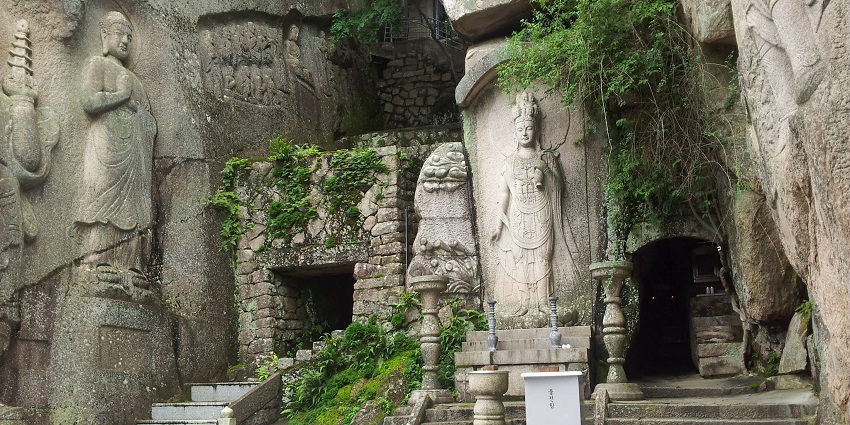
Photo: Andrewssi2 / Wikimedia Commons
Carved into rocky cliffs, Seokbulsa Temple stands as a unique example of Korean Buddhist architecture. Founded in the 1930s by Monk Jo Ilhyeon, this ‘Stone Buddha Temple’ features remarkable rock-carved Buddhist figures, including the impressive 11-faced Avalokitesvara Bodhisattva and a serene seated Maitreya Buddha. The temple’s dramatic setting, intricate carvings, and peaceful atmosphere make it a must-visit destination for history enthusiasts, spiritual seekers, and travellers alike. Visitors can also admire stunning panoramic views of Busan, explore the temple’s tranquil courtyards, and experience a profound sense of serenity amid its awe-inspiring artistry.
Location: 208-2 Mandeok-dong, Buk-gu, Busan
Major Attraction: Rock-carved Buddha figures
Ideal Trip Duration: 3 – 4 hours
Timings: 9 AM – 6 PM
Nearest Airport: Gimhae International Airport
Nearest Subway Station: Mandeok Station
The timeless beauty of Korean temple architecture continues to captivate visitors from around the world. Whether you’re seeking spiritual enlightenment, cultural immersion, or simply a peaceful escape, these temples offer profound experiences that stay with you long after your visit. From Jogyesa’s urban serenity to Haedong Yonggungsa’s coastal majesty, each temple tells its own unique story through centuries of Buddhist tradition. As you plan your journey to South Korea with TripXL, remember that these sacred spaces aren’t just tourist attractions; they are a glimpse into the past!
Cover Photo: kikujungboy CC / Shutterstock


 WhatsApp
WhatsApp
 Twitter
Twitter



